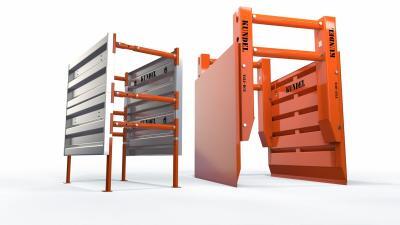What is Cross Connection?
Cross-Connection refers to an undesired or unauthorized connection between a potable (drinkable) water supply and a non-potable (non-drinkable) source. It occurs when there is a physical connection or a plumbing arrangement that allows the mixing of potable water with potentially contaminated water or substances. Cross-connections pose a significant risk of water contamination and can lead to serious health hazards if not properly addressed.
Key Points About Cross-Connections:
- Contamination Risk: Cross-connections create a pathway for contaminants, pollutants, or non-potable substances to enter the potable water supply. This can include chemicals, wastewater, industrial fluids, gasses, or other sources that may contain harmful microorganisms, toxins, or pollutants.
- Common Scenarios: Cross-connections can occur in various settings and situations. Examples include the improper plumbing arrangement between potable and non-potable systems, backflow from irrigation systems, submerged hoses in non-potable water, or connections between potable and non-potable plumbing fixtures.
- Backflow: Backflow is a common consequence of cross-connections. It refers to the unwanted reversal of water flow, which can occur when the pressure in the non-potable source exceeds the pressure in the potable water supply. Backflow can cause contaminants or pollutants to flow backward into the drinking water system.
- Health Risks: Cross-connections and subsequent backflow events can lead to the contamination of potable water, posing significant health risks to consumers. Contaminants may include bacteria, viruses, parasites, chemicals, or other substances that can cause waterborne diseases, gastrointestinal illnesses, or other adverse health effects.
- Prevention Measures: To prevent cross-connections and protect the potable water supply, various measures are employed. These include the installation of backflow prevention devices (such as backflow preventers or check valves), proper plumbing design and installation, regular inspections, and enforcement of plumbing codes and regulations.
- Cross-Connection Control Programs: Many municipalities, water utilities, and regulatory agencies have implemented Cross-Connection Control Programs to identify and mitigate potential cross-connections. These programs involve surveys, inspections, and education to identify and address cross-connection risks, ensure compliance with plumbing codes, and protect public health.
- Legal and Regulatory Requirements: Cross-connection control is often governed by local, regional, or national regulations. These regulations may require the implementation of backflow prevention devices, the use of approved plumbing materials, and adherence to specific standards and practices to prevent cross-connections and protect the potable water supply.
Preventing and managing cross-connections is essential for maintaining the safety and quality of the potable water supply. By implementing appropriate plumbing practices, backflow prevention measures, and robust cross-connection control programs, the risks of water contamination can be minimized, ensuring safe drinking water for communities.
Cross-connection prevention and standards are crucial in ensuring the safety and integrity of potable water supplies.
Additional Details About Cross-Connection Prevention and the Standards Associated with it:
- Cross-Connection Control Programs: Cross-connection control programs are implemented by water utilities, municipalities, and regulatory agencies to identify and address cross-connections. These programs typically include surveys, inspections, and educational outreach to identify potential cross-connection hazards and enforce preventive measures.
- Backflow Prevention Devices: Backflow prevention devices are integral to cross-connection prevention. These devices are installed at strategic points in the water distribution system to prevent the reverse flow of water and contaminants into the potable water supply. The selection and installation of backflow prevention devices are guided by standards and regulations.
- Plumbing Codes and Regulations: Plumbing codes and regulations play a significant role in cross-connection prevention. They provide guidelines for plumbing system design, installation, and maintenance to minimize the risk of cross-connections. These codes are often enforced by local building departments and regulatory agencies to ensure compliance with cross-connection prevention standards.
- American National Standards Institute (ANSI): ANSI develops and publishes standards related to cross-connection control and backflow prevention. ANSI/ASSE Series 5000 and ASSE 1013 are commonly referenced standards that provide guidelines for the design, installation, testing, and maintenance of backflow prevention assemblies.
- International Association of Plumbing and Mechanical Officials (IAPMO): IAPMO produces the Uniform Plumbing Code (UPC), which is widely adopted in North America. The UPC includes provisions for cross-connection control, backflow prevention devices, and plumbing system design to safeguard against cross-connections.
- American Water Works Association (AWWA): AWWA publishes standards and manuals related to water supply and distribution, including cross-connection control. The AWWA Manual M14: Recommended Practice for Backflow Prevention and Cross-Connection Control provides guidance on implementing cross-connection control programs and selecting appropriate backflow prevention devices.
- Local and Regional Regulations: In addition to national standards, many jurisdictions have their own specific regulations and ordinances addressing cross-connection prevention. These regulations may require the use of approved backflow prevention devices, regular testing and maintenance of these devices, and compliance with specific cross-connection control measures.
- Training and Certification: Training and certification programs are available for individuals involved in cross-connection control, including plumbing professionals, inspectors, and cross-connection control specialists. These programs ensure that individuals possess the necessary knowledge and skills to effectively prevent and address cross-connections.
Cross-connection prevention standards are continuously evolving to address new challenges and advancements in plumbing technology. It is important for stakeholders, including water utilities, plumbing professionals, and regulatory agencies, to stay updated with the latest standards and regulations to ensure the effective prevention of cross-connections and safeguard public health.


